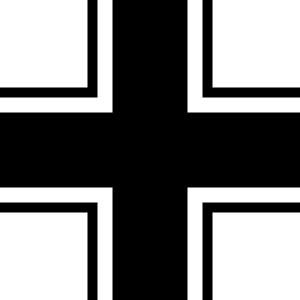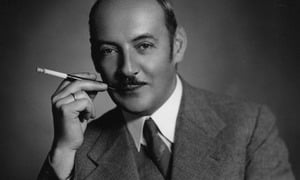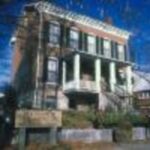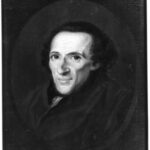The Luftwaffe was the German air force during World War II, and was established in May of 1935 by Hermann Göring. Göring, a Nazi general second in command of the Third Reich, had been a fighter ace in WWI, with 22 confirmed kills, and had been commander of the Jagdgeschwader 1, or JG 1, to whom the famous Red Baron had belonged to. This gave Germany the advantage of having an experienced seasoned pilot as a commander (Goering).
Many aircraft were used by the Luftwaffe during WWII. Many of these were designed and built during WWII with specific purposes. The most popular aircraft that would have engaged in what are called “dogfights,” or air battles, were theMesserschmitt Bf 109, and the Focke-Wulf Fw 190. Both were powered by propellers and were armed with machine guns. The Messerschmitt was, however, the most popular, with over 30,000 produced. The Messerschmitt was run by a Mercedes-Benz DB 601 engine, producing almost 1,000 HP, which increased speed and power, causing the kill ratio for the plane to be 9:1. This made the plane a deadly machine. The Focke-Wulf had shorter wings and was powered by a BMW radial engine. The most popular WWII German bomber was the Junker Ju 87 Stuka, with over 5,700 produced. Stuka, from the word Sturzkampfbomber, means dive-bomber, which is what this plane was. It dove down above the target and was able to drop bombs with deadly accuracy (WWII Aircraft).
Between 1936 and 1939, the Luftwaffe had a chance to test and refine its equipment, tactics, and pilots during the Spanish Civil War. It was at this time that famous aircraft, such as the Stuka bomber and the Messerschmitt, earned their wings. However, to keep from giving the world the impression that Germany was supporting the war, the Luftwaffe symbols and markings were replaced with the nationalist airforce markings for the time being.
Due to the Treaty of Versailles, the German pilots had to be trained secretly. Small planes were used to give the appearance to the Allies that the pilots were being trained to be civil pilots for airlines such as Lufthansa. With the help of it’s future enemy, the USSR, Germany established a secret airfield in Lipetsk, Russia, in 1924 and operated it for 9 years, using Dutch, Russian, and German aircraft for training (Luftwaffe 2).
During WWII, Some pilots stood out and fought exceptionally well. Over 100 pilots shot down over 100 enemy aircraft. Of these, there were a select few who became some of the best fighter pilots of all time. One of them was a man named Hans-Ulrich Rudel. Rudel was possibly the most skilled fighter pilot of WWII. Rudel won numerous medals and honors, such as the Kings Cross and Swords and Diamonds. Rudel has the world record of flying 2,530 combat missions and destroying 2,000 targets including 519 tanks, 800 vehicles, 150 artillery guns, two cruisers, a destroyer, and one battleship. A unique fact about Rudel was that even in his high rank, he fought at the front line until his surrender on V-E Day in May if 1945 (Rudel). Erich Hartmann was another great pilot of the Luftwaffe. Hartmann shot 352 enemy aircraft down, the most number of enemy aircraft destroyed by a single person during WWII (Ace).
Many air battles took place during WWII, but none are as famed as the great Battle Of Britain, which took place over the skies of London. The battle took place right after France surrendered to the Germans. Britain was one of the last European countries west of Germany that the Germans wanted to control. The Germans needed to control the English Channel between the UK and France in order to invade Britain. This was the first campaign to be fought entirely in the air by aircraft. The battle began on July 10th, 1940, and lasted until October 31st of that year. Over 30,000 civilians and military personnel were killed during the battle. The Luftwaffe had many more experienced pilots than the RAF did, however the RAF had radar, which gave them the advantage of seeing the enemy before they ever arrived. Weather often stopped or delayed sweeps and attacks from both sides during the battle. Despite having more aircraft, Germany lost many more aircraft than the RAF did. Ultimately, Britain won the battle and Germany lost. Many say that the reason for the loss was bad tactics and strategic planning. The Germans fought very far away from German bases, so refueling and rearming was difficult. In contrast, British planes were often just minutes away from bases where they could land to rearm and refuel (BoB).
The loss at the Battle of Britain marked the beginning of a steady decline that was, for the most part, due to the number of Allied aircraft outnumbering the Luftwaffe fleets. Towards the end of the war, the Luftwaffe ultimately disintegrated because of lack of trained pilots and fuel shortages. Between 1939 and 1945, over 3.4 million served in the Luftwaffe. Of them, 165,000 were killed, 155,000 went missing, and 192,000 were injured. During WWII, 7,361 men were awarded the Knights Cross, the highest German combat honor during the war. Of them, 1,785 were men who served in the Luftwaffe, making up 24% of the total awarded (Luftwaffe).
Works Cited
(WWII Aircraft)
Acepilots.com (2008). Great Aircraft of History World War Two Combat Planes and more. Retrieved May of 2008 from Acepilots.com: http://www.acepilots.com/planes/main.html
(Luftwaffe)
Pipes , Jason (2007). Luftwaffe – The Airforce 1935-1945. Retrieved May of 2008
from Feldgrau.com: http://www.feldgrau.com/luft.html
(BoB)
Trueman , Chris (2007). Battle of Britain. Retrieved 30 November 2007 from historylearningsite.co.uk: http://www.historylearningsite.co.uk/battleofbritain.htm
(Rudel)
Parada , George (2005). Hans-Ulrich Rudel. Retrieved 30 November 2007 from achtungpanzer.com: http://www.achtungpanzer.com/gen9.htm
(Ace)
Acepilots.com (2007). Erich Hartmann – top ace of all time. Retrieved 30 November 2007 from Acepilots.com: http://www.acepilots.com/misc_hartmann.html
(Goering)
Wistrich , Robert S (2007). Hermann Goering. Retrieved 30 November 2007 from jewishvirtuallibrary.org: http://www.jewishvirtuallibrary.org/jsource/Holocaust/goering.html
(Luftwaffe 2)
SLS STRATEGY LIGHTS SERIES (2007). Luftwaffe. Retrieved 30 November 2007 from SLS STRATEGY LIGHTS SERIES: http://www.battle-fleet.com/pw/his/Luftwaffe_History_WW1_WW2_Cold_%20war.htm








